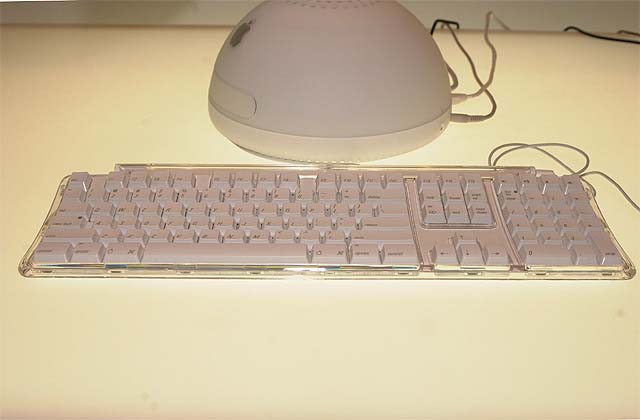The Apple Pro Keyboard is a pointing device that was designed, manufactured, and sold by Apple from 2000 to 2003 as part of the Apple Keyboard series. The Keyboard has been introduced on 19 July 2000 and its price started at $59. The new keyboard features a USB connection to the computer, two USB ports on the sides, a single adjustable-high leg, black keys, and a clear case. A version with white keys has been introduced alongside the new iMac G4. This Keyboard has been discontinued on 6 May 2003 and has been replaced by Apple Keyboard.
- Apple Pro Keyboard 2002 Price
- Apple Pro Keyboard M7803
- Apple Pro Keyboard 2002 Download
- Apple Smart Keyboard Reviews
- Apple Pro Keyboard 2000
- Apple Pro Keyboard 2002 Driver
Apple Pro Keyboard Apple Pro Keyboard originally introduced in 2000, but discontinued three years later, this keyboard reintroduced the additional extended function keys last seen in the Apple Design Keyboard and debuted in a clear case with black keys. A version with white keys was introduced in 2002 alongside the iMac G4. The new Magic Keyboard is designed to work with the new iPad Pro, and is also compatible with the previous generation iPad Pro models. 1 Magic Keyboard, along with Apple Pencil, are the perfect pro accessories for the most advanced iPad Pro ever with fast and powerful performance, the breakthrough LiDAR Scanner, pro cameras, pro performance and pro audio enabling pro workflows that push the.
Today Apple Pro Keyboard is 20 years old!
Apple Pro Keyboard 2002 Price
Apple Pro Keyboard – General information
Apple Pro Keyboard M7803
Overview
System Requirements
- Macintosh with USB port
- Mac OS 9.0.4 or later
Apple Pro Keyboard 2002 Download

Keyboard

Connections

Power
Report an incorrect record in this productApple’s butterfly keyboard was only around for five short years, but it generated enough negative press to last a lifetime. Now, a judge in California has ruled that Apple needs to face the music.
U.S. District Judge Edward J. Davila for the Northern District of California decided Monday that a growing class-action suit spanning eight states can proceed despite Apple’s objections. The suit, which claims that “the low-travel design of the butterfly mechanism makes the keys prone to fail when minute amounts of dust or debris enter the sensitive area beneath the switch,” includes 11 consumers from California, Massachusetts, New York, Illinois, Florida, Washington, New Jersey, and Michigan, and seeks unspecified “economic injury and aggregate damages.”
The suit relies on “a choice-based conjoint analysis” to determine “the price at which a consumer would choose a laptop with a keyboard defect over laptops with no defects.” The calculation effectively measures “the discount a customer would demand before purchasing a MacBook with a disclosed keyboard defect” to determine that Apple was overcharging consumers for a laptop with a keyboard that has been known to suffer from stuck, repeating, and unresponsive keys.
It seems like a stretch to say that Apple knowingly charged full price for a laptop that it knew was defective, but the judge found enough the argument “relevant to Plaintiffs’ theory of class-wide damages” and certified the class-action suit.

Apple Smart Keyboard Reviews
Girard Sharp, the law firm behind the suit, is looking to expand its class-action to more consumers in all 50 states through an online survey.
Apple Pro Keyboard 2000
Apple already admitted the problems with the butterfly keyboard by way of a Keyboard Service Program that covers all laptops using the keyboard. After several “fixes” that failed to alleviate the problems, Apple switched to a scissor-based Magic Keyboard with the launch of the 16-inch MacBook Pro in 2019 and has since switched all of its notebooks over to the newer style, including the newest M1 laptops.

Apple Pro Keyboard 2002 Driver
Apple is no stranger to class-action lawsuits. Most notably, it was forced to pay up to $500 million to consumers over battery-related throttling in the iPhone 6, 6 Plus, 6s, 6s Plus, 7, 7 Plus, and SE. If the class-action is successful, it will likely consist of direct payments to affected customers and refunds for any keyboard repairs made that aren’t already covered by the Keyboard Service Program.



